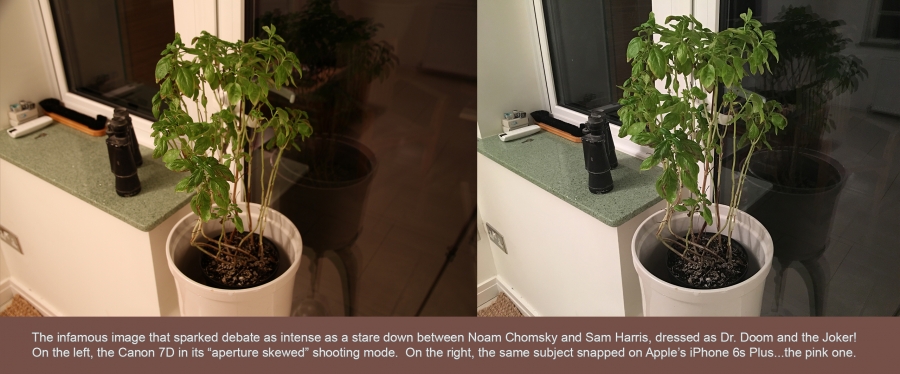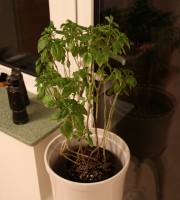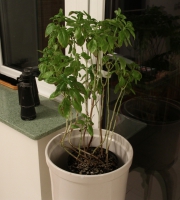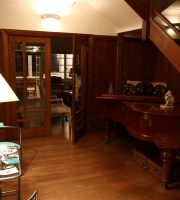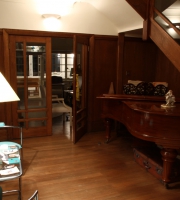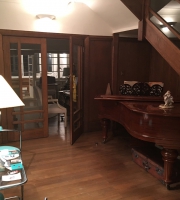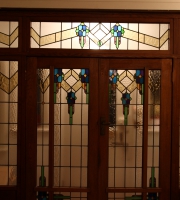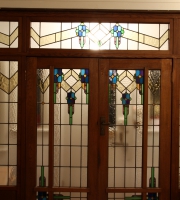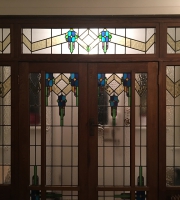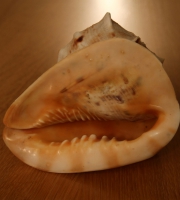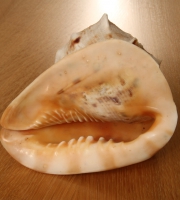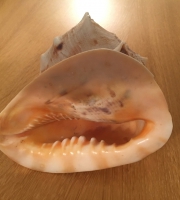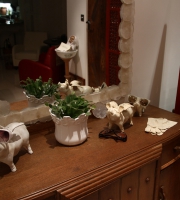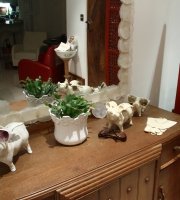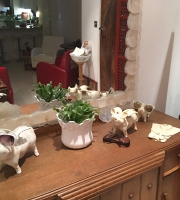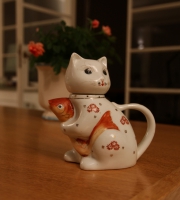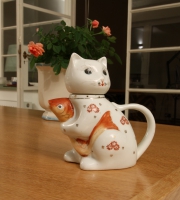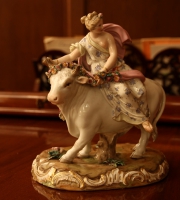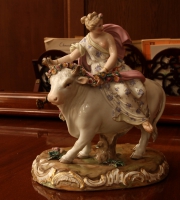A Camera Complex
In a dramatic turn of events, the unleashing of Apple’s sixth order of portable communication facilitators baring the letter “S”, generated ever so slightly lesser or greater levels of enthusiasm and cynicism than their non “S” branded predecessors, a word I despise using in any technological context…along with counterpart. Both terms are as common as a brick phone wedged between the front seats of a Yuppie’s BMW.
They are not worthy of the engineering elysian to which we refer, the essence of human endeavour, the imperial enabler of remote contact. An invention we would Fedex to an alien race in a time capsule minutes before the destruction of our planet, along with a recording of Tchaikovsky Sixth Symphony, a video of the Rumble in the Jungle, Martin Luther King’s I had a Dream, a bicycle, a potato, Evian mineral water, Einstein’s theory of relativity and a note saying, all contents strictly for non-profit use, unless you happen to be God.
Aside from multi-level tertiary dimension tactility, one scorching point of speculation pertaining to this specific Smart Phone’s intriguing résumé concerned optical particulars and it’s designer’s sensational decision to abandon caution and augment its sensory perceptions with a quartet of mega pixels, raising the grand total from 8 to 12.
Of course, if we consider image quality as the photographic equivalent to break horse power, a higher number of megapixels no more ensures a camera’s superiority than an engine with a larger fuel capacity guarantees a Volkswagen increased speed, snappier acceleration or a sustainable carbon footprint. Overall performance is governed a myriad of additional components, parameters and features.
Amongst the most significant are focal length, the standard of the image sensor, whether or not interchangeable lenses are supported, the facility to preserve pictures in RAW formats and thus allow for crucial post processing options such as the ability to re-instate colour to a monochrome image. The presence of manual overrides for contrast, exposure, white balance, aperture variance and shutter speed and in each case, the range and granularity of adjustment. Professionals could name others far too obscure for me to list, let alone expound to expound on. Suffice to say that this point and click chronicler of magic moments…
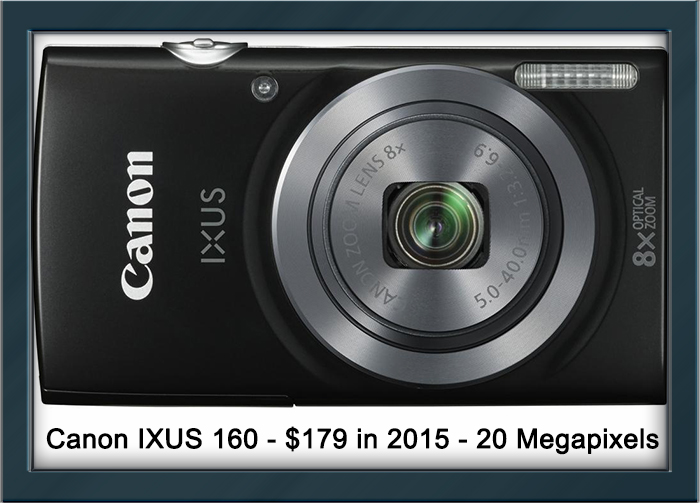
Which upon launch could be obtained for little more than a month’s worth of Sky TV, could would and should never stand frame to frame with this domineering DSLR, which would have likely necessitated sacrificing the very holiday it was purchased to document, despite its senior status and inferior resolution.
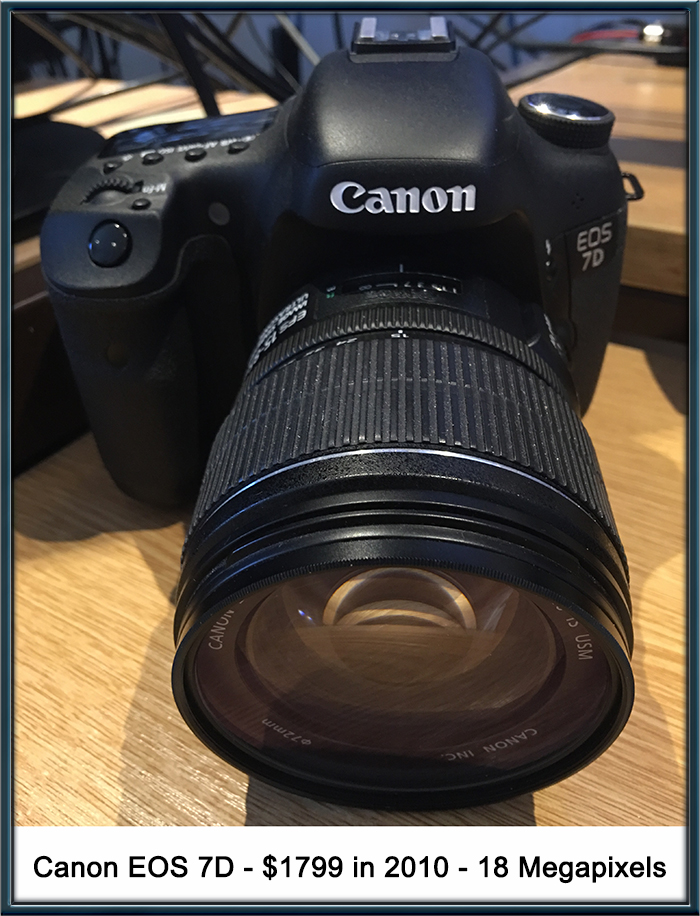
But what of the iPhones legendary beauty to pixel ratio? Could a contemporary handset-housed camera that snapped farther above its stats than a toothless crocodile really upstage an ageing but fully fledged enthusiast grade alternative? Four years separates the contenders in questions, which were chosen for no other reason than their proximity to hands and fingertips, along with the fact that I believed the comparison would be fascinating.
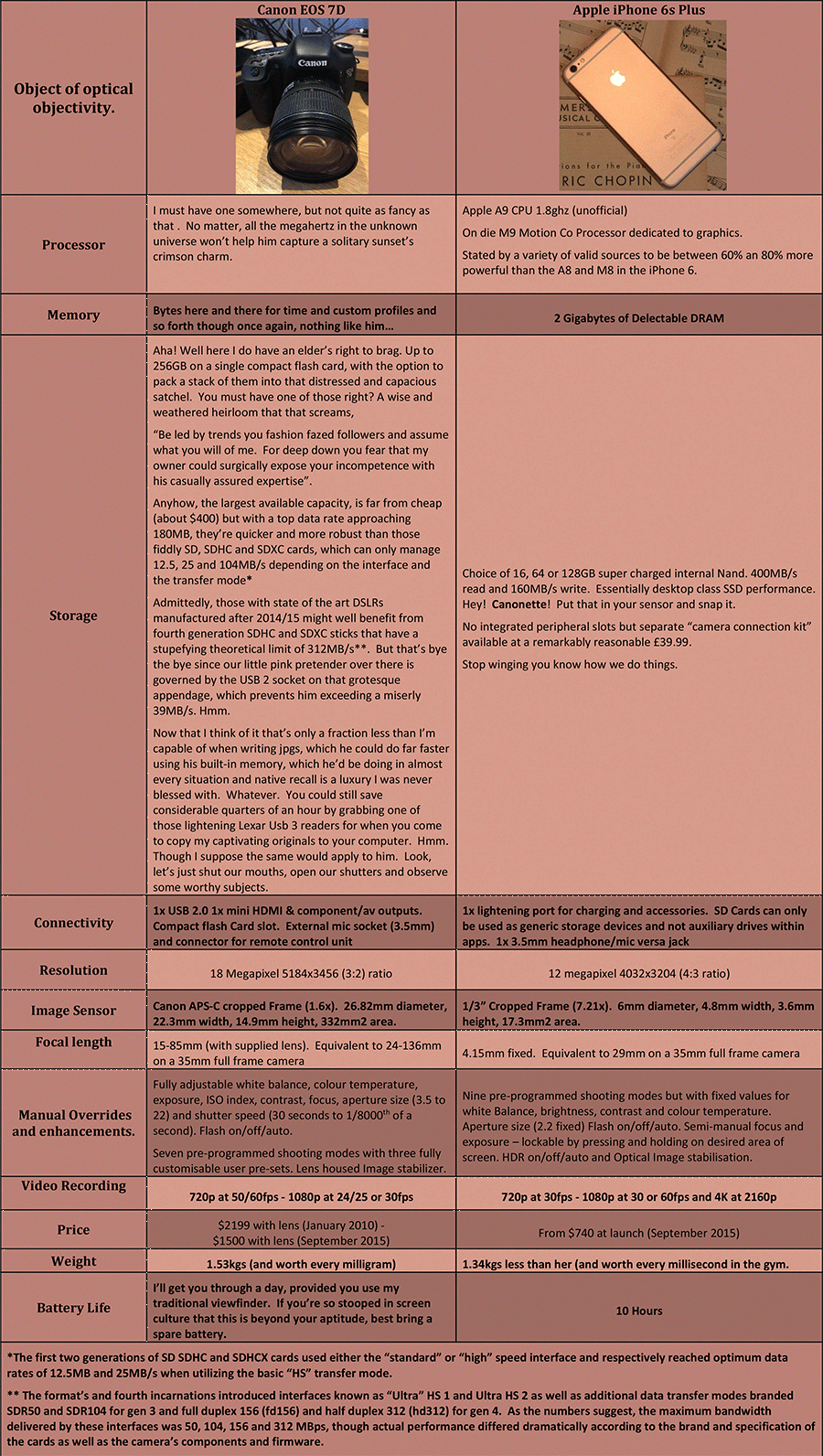
“Wow!” exclaimed Mum. Straightening up after depositing the afternoon’s third mug of fragrant Lap Sang a safe distance from my crumb caked Razer Black Widow. “That one looks so much better”.
“In what way?” I enquired, already planning my next three responses and inwardly cursing a keyboard that, barely hours after acquiring it, I’d discovered had a chic-let style crumb resistant sibling, the Razer Deathstalker.
“Oh come on!”, she continued. It’s clearer, more vivid, much brighter. The edges of the leaves stand out against the wall. I prefer the colour too, seems more accurate and the whole thing is in focus. Look at the brush on the windows sill, you can even see the bristles.”
“All true.” came my reply. “But there’s more to photos than sharpness, some of the reasons you’ve given might by why certain people are put off, I was of course referring to “professionals”.” Look at the plant carefully, to me it lacks dimension.” I flipped back to image A. “Were as that,” I went on “has real depth. It’s extremely clear in the foreground, the blurriness is supposed to help highlight the photo’s defining elements.”
“It’s too yellow, ” she said dismissively. “Let me see the first one again.” I sighed and clicked.
“Yes, unquestionably clearer,” she insisted, leaning forwards to point at the screen. “I can see shadows and veins in those leaves, in the other they looked completely flat.
“No!” I persisted, flipping once again. “But look at the clump near the roots on this one, they’re the most detailed in either”. I switched back and fourth a handful of times, from A to B to A to B. Then from windowed to full screen and back once again.
“It all depends on what you want to achieve.” I said, in as educated a tone as I could muster. “It’s easy to be impressed by brightness and definition, but when you analyse every aspect of a photograph you start to understand the importance of framing and composition and what separates average album fodder from the works of art that can make or break brands, preserve a spellbinding moment in nature or end up as treasured tributes to local landmarks on the walls of a Pizza Express.”
“I attended art school you know?” Mum interrupted. “And I got a gold star for your project on Victorian architecture.” I exhaled through gritted teeth, attempting to quash not only two perfectly salient points, but also the memory of my proudest academic achievement. An assignment devised by Mr. Benson especially for the end of the Summer term in in 1993 to occupy teenagers whose leisure time was extremely limited and ruin seven weeks of X-Wing, Alone in the Dark, Day of the Tentacle, Fate of Atlantis and Doom for the rest of us, at least, those without a clever parent to ease the pain.
The ordeal was to mark the end of an era when I attributed value of any sort to fanciful coloured certificates baring pretentious calligraphic declarations invariably followed by a date and the spidery signature of a supposedly supreme authority.
My architectural Swan Song was a 60 page embodiment of abnormal inspiration lent the ultimate credence by Mum’s motivation and creativity. Two months after I returned for the autumn, it had been mysteriously mislaid, left in the boot of a taxi Mr. Benson claimed had driven him home after his own pride and joy, a brown V8 Ford Capri had blown a gasket. Mr. Benson’s favourite catchphrase was,
“Empty vessels make the most noise”.
I never received the papery accolade I had been promised….Samantha Templeton received hers.
“All I’m saying is,” I commenced following a period of reflective silence. “If you’re given twelve decent shots of the Eiffel tower snapped on a dozen different cameras it takes much longer than 12 seconds to pick one for the postcard. A huge amount can hinge on personal preference and some characteristics that find appealing are only apparent to the subconscious, until they’re pointed out.”
“Even so,” she wasn’t buying it. “The first one was my favourite, I’m sorry I know you love your new iPhone but to my eyes, albeit not quite the force they were, there’s only one winner.”
“The first one WAS THE IPHONE.”
And that fascinating exchange was why I decided that three groups of photos were essential to accurately demonstrate the potential of our two digital visionaries.
As capable as smart phone cameras had become by late 2015, their primary purpose remained to grant instant gratification during caffeine fuelled pictorial patter, a fleeting journey through a mountain pass, or impromptu strolls along silvery shores to steal one magic frame of spectral splendour, when in all such scenarios, the prospect of navigating through mazes of menus to achieve that proverbial money shot is as effective as pointing a remote control at the moon and pressing pause.
Handset harboured cameras shall at least for the rest of my years, offer far less manual control due to their average adopter’s aversion to a legion of niche jargon and hours of convoluted post production. Thus, many of the techniques that might later be used to enhance an image are either applied automatically at the point of capture or provided in simplified form via an array of pre-configured filters and effects.
It doesn’t matter how many fickle techno journalists, whose passion for photography peaks in sweet unison with Apple’s September keynotes claim to persuade keen hobbyists and accredited experts to abandon the synergy of equipment it cost them three mortgages, two Ducatis and one divorce to obtain, there will always be complex clicks of the trade beyond the scope of any iPhone and all contrasting opinions are likely to be predicated on the customary short-list of promotional pics, all recorded in suspiciously i-DEAL conditions.
I put this argument to mum, and in an attempt to defend my courageous Canon’s honour, made a proclamation of my own, namely that whilst it was impossible to reproduce the 7D’s delightful depth of field on the 6s, I could easily train the former to mimic the latter’s seductive and commercially viable lustre .
Testing the 7D in every one of it’s shooting modes and combining these with its catalogue of available customisations would have taken longer than explaining the plot of Inception, hence I decided to focus (ho ho) on what were arguably the three most influential catalysts. Aperture, shutter speed and colour temperature.
The 7D’s “AV” profile allocates priority to the lens’ aperture, generating that palpable sense of perspective so sought after throughout the industry and applied to great effect within every one of its disciplines. Imagine a glittering tumbler ensconced on a Hepplewhite table nestled amongst rich chesterfield burgundy and warm rosewood panels, a roaring log fire illuminating a lining of crystalline cubism and liquid Topaz, single malt whisky on ice in plain English. The flames and furniture, as blurred as lantern light through morning mists, the glass and its contents, as sharp as diamonds in a cloudless sky.
By contrast, “TV” mode reverses the process, narrowing the aperture but allowing the shutter to remain open for longer during each shot, thereby compensating for the loss of light. Interestingly, even this setting was not sufficient to align the Canon’s lucidity with that of the iPhone, a task which eventually required creating a custom profile incorporating all three variables .
The aperture was assigned a value of 1/16, while exposure time or shutter speed resided between 1 and 10 seconds depending on ambient brightness.
Advanced DSLRs such as the 7D, use the “Kelvin” Colour temperature scale as a means of monitoring and verifying ambient light sources so as to accurately calibrate the resulting photographs. This scale ranges from roughly 2000/3000K, for environments saturated in red and orange hues, such as a sun bathed coast or a candle lit interior, up to approximately 7000K for surroundings with abundant blue and violet shades including televisions, neon bulbs and flashes, though not all cameras account for the full spectrum.
Being a consumer class device, the iPhone’s white balance can only be modified by selecting one of the its pre-programmed filters, three of which are black and white. For this test, the option was left on it’s stock value of “none”, which applied elevated levels of blue and green to captured footage. In order to replicate this quirk on the Canon, it was necessary to reduce its colour temperature from a default of 5000K to 2800K, forcing the sensor to detect there were an excessive amount of red and orange tones and readdress the balance artificially by adding blue and green.
Approximately 3 hours of onerous prodding, dialling and tweaking had ensured before this tricky but enriching and entirely self-inflicted challenge was completed. The results failed to foil Mum’s forensic gaze but I was satisfied that my assertion had been proven.
It is with pleasure and anticipation that I now invite you to judge for yourselves and please, don’t ask me which I prefer.





